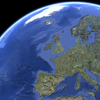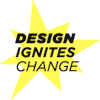March 2009
Donation Usability: Increasing Online Giving to Non-Profits and Charities.  It’s been a long time coming: Jakob Neilson and his group have conducted a usability survey of 23 non-profit websites. Neilson’s posted a teaser with some of his findings, while the full 124-page report will set you back some $98 dollars.
It’s been a long time coming: Jakob Neilson and his group have conducted a usability survey of 23 non-profit websites. Neilson’s posted a teaser with some of his findings, while the full 124-page report will set you back some $98 dollars.
So what do donors want? A clear understanding of an organization's objectives and work, as well as how it uses donations. In my consulting work, I’ve long argued that posting a budget breakdown is an easy way to increase transparency and fundraising. (Especially since most groups already create this for their annual report.) Where possible, pegging fundraising to specific tasks and outcomes also helps.
So what do donors want? A clear understanding of an organization's objectives and work, as well as how it uses donations. In my consulting work, I’ve long argued that posting a budget breakdown is an easy way to increase transparency and fundraising. (Especially since most groups already create this for their annual report.) Where possible, pegging fundraising to specific tasks and outcomes also helps.
The Field Guide to Humanitarian Mapping.  A free publication to help aid organizations use geospatial tools and methods in their work in emergencies. It’s published by MapAction, an NGO that works specifically on mapping for humanitarian emergencies, deploying volunteer GIS professionals around the globe.
A free publication to help aid organizations use geospatial tools and methods in their work in emergencies. It’s published by MapAction, an NGO that works specifically on mapping for humanitarian emergencies, deploying volunteer GIS professionals around the globe.
See also Mapping for Advocacy, a collection of 10 case studies, and Maps for Advocacy a more general introduction to geographical mapping techniques for NGOs. Both booklets are free to download. While not specifically oriented for NGOs, Making Maps is an also excellent general primer. The Making Maps blog hosts some interesting discussion as well.
 A free publication to help aid organizations use geospatial tools and methods in their work in emergencies. It’s published by MapAction, an NGO that works specifically on mapping for humanitarian emergencies, deploying volunteer GIS professionals around the globe.
A free publication to help aid organizations use geospatial tools and methods in their work in emergencies. It’s published by MapAction, an NGO that works specifically on mapping for humanitarian emergencies, deploying volunteer GIS professionals around the globe.See also Mapping for Advocacy, a collection of 10 case studies, and Maps for Advocacy a more general introduction to geographical mapping techniques for NGOs. Both booklets are free to download. While not specifically oriented for NGOs, Making Maps is an also excellent general primer. The Making Maps blog hosts some interesting discussion as well.
The Public School. “The Public School is a school with no curriculum. At the moment, it operates as follows: first, classes are proposed by the public (I want to learn this or I want to teach this); then, people have the opportunity to sign up for the classes (I also want to learn that); finally, when enough people have expressed interest, the school finds a teacher and offers the class to those who signed up. The Public School is not accredited, it does not give out degrees, and it has no affiliation with the public school system. It is a framework that supports autodidactic activities, operating under the assumption that everything is in everything.”
Design Students for Change
Unsatisfied with their given curricula, design students around the US are demanding a focus on design for social change — and making it happen. Here are a few recent events:
- In April 2008, students in the Social Change + Activism group at Harvard Graduate School of Design organized FuturePresent (PDF) a symposium on diversity in design professions.
- In November 2008, students at Brown and RISD organized the multi-disciplinary conference A Better World by Design to look at how designer, engineers, and entrepreneurs are making change.
- What the *#&! is Social Design? is an exhibition organized by two graduate design students from the Academy of Art University in San Francisco. It opens this Thursday, March 12.
Design Ignites Change.  “Worldstudio, together with the Adobe Foundation’s signature program Adobe Youth Voices, today announced Design Ignites Change, a program that encourages talented high school and college students to use the power of design to address social issues in their local communities through substantive public projects. Students are encouraged to develop projects that will stimulate thought, dialogue, action and ultimately change.... A major component of the initiative is a mentoring program where college and university students, educators and creative professionals, work with underserved high school students to develop actual projects that will benefit their own communities while giving them a voice around important social issues.”
“Worldstudio, together with the Adobe Foundation’s signature program Adobe Youth Voices, today announced Design Ignites Change, a program that encourages talented high school and college students to use the power of design to address social issues in their local communities through substantive public projects. Students are encouraged to develop projects that will stimulate thought, dialogue, action and ultimately change.... A major component of the initiative is a mentoring program where college and university students, educators and creative professionals, work with underserved high school students to develop actual projects that will benefit their own communities while giving them a voice around important social issues.”
 “Worldstudio, together with the Adobe Foundation’s signature program Adobe Youth Voices, today announced Design Ignites Change, a program that encourages talented high school and college students to use the power of design to address social issues in their local communities through substantive public projects. Students are encouraged to develop projects that will stimulate thought, dialogue, action and ultimately change.... A major component of the initiative is a mentoring program where college and university students, educators and creative professionals, work with underserved high school students to develop actual projects that will benefit their own communities while giving them a voice around important social issues.”
“Worldstudio, together with the Adobe Foundation’s signature program Adobe Youth Voices, today announced Design Ignites Change, a program that encourages talented high school and college students to use the power of design to address social issues in their local communities through substantive public projects. Students are encouraged to develop projects that will stimulate thought, dialogue, action and ultimately change.... A major component of the initiative is a mentoring program where college and university students, educators and creative professionals, work with underserved high school students to develop actual projects that will benefit their own communities while giving them a voice around important social issues.”
Down the Toilet.  “More than 98% of the toilet roll sold in America comes from virgin forests.… Extra-soft, quilted and multi-ply toilet roll made from virgin forest causes more damage than gas-guzzlers, fast food or McMansions.… In Europe and Latin America, up to 40% of toilet paper comes from recycled products. Greenpeace this week launched a cut-out-and-keep ecological ranking of toilet paper products.”
“More than 98% of the toilet roll sold in America comes from virgin forests.… Extra-soft, quilted and multi-ply toilet roll made from virgin forest causes more damage than gas-guzzlers, fast food or McMansions.… In Europe and Latin America, up to 40% of toilet paper comes from recycled products. Greenpeace this week launched a cut-out-and-keep ecological ranking of toilet paper products.”
 “More than 98% of the toilet roll sold in America comes from virgin forests.… Extra-soft, quilted and multi-ply toilet roll made from virgin forest causes more damage than gas-guzzlers, fast food or McMansions.… In Europe and Latin America, up to 40% of toilet paper comes from recycled products. Greenpeace this week launched a cut-out-and-keep ecological ranking of toilet paper products.”
“More than 98% of the toilet roll sold in America comes from virgin forests.… Extra-soft, quilted and multi-ply toilet roll made from virgin forest causes more damage than gas-guzzlers, fast food or McMansions.… In Europe and Latin America, up to 40% of toilet paper comes from recycled products. Greenpeace this week launched a cut-out-and-keep ecological ranking of toilet paper products.”
